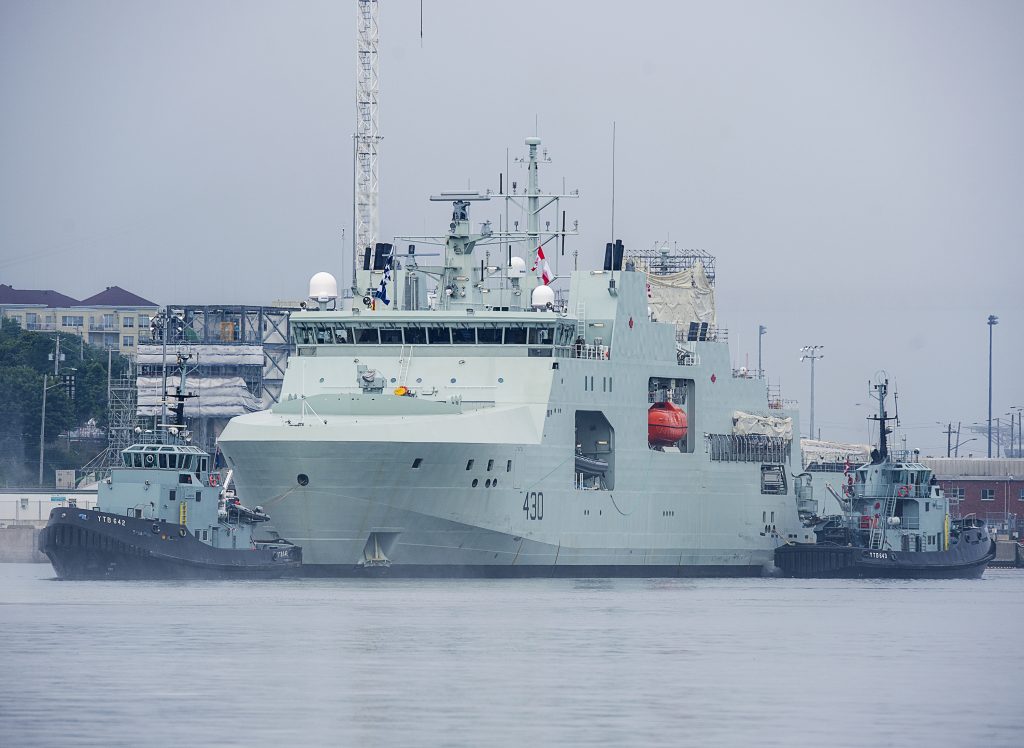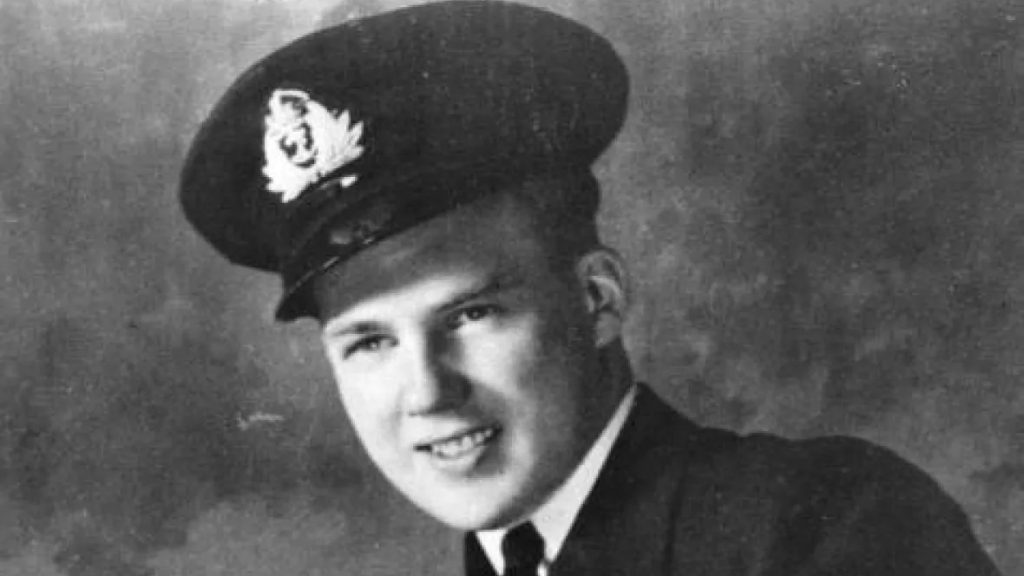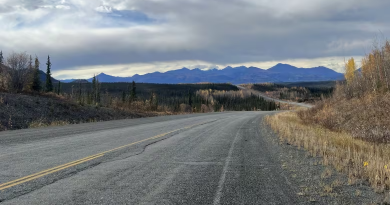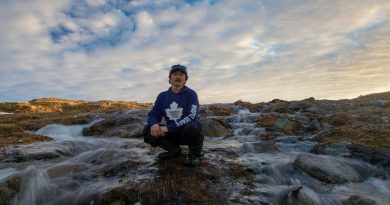Canada names final ship in its Arctic patrol fleet after WW II navy pilot

The Royal Canadian Navy says its sixth Arctic patrol vessel will be named after Lt. Robert Hampton Gray, a Second World War navy hero.
With the addition of these new ice-capable warships, the military will be able to beef up its ability to patrol and protect Canada’s northern coastal waters.
These Arctic and Offshore Patrol Ships (AOPS), built at the Irving shipyard in Halifax, are able to operate in up to 120 cm of first-year sea ice, carry a submarine-hunting Cyclone helicopter as well as small vehicles, deployable boats, and cargo containers.
The Canadian Coast Guard will also receive two civilian versions of the patrol ship.
The navy officially received the first of its Arctic patrol vessels, HMCS Harry DeWolf, at the end of July.
Each ship is named after a prominent Canadian naval figure. The other five ships are named Harry DeWolf, Margaret Brooke, Max Bernays, William Hall and Frédérick Rolette.

Gray volunteered for the naval reserve in 1940 and served as a pilot in the Royal Navy Fleet Air Arm.
Gray served in Britain, East Africa and finally with the British Pacific Fleet which, in the final weeks of the war, was operating against the Japanese home islands with the United States Navy’s Third Fleet.
Gray embarked on HMS Formidable with 1841 Squadron, which joined the war in the Pacific as part of Operation ICEBERG in April 1945.
Three months later, he received the Distinguished Service Cross for sinking a Japanese destroyer on 28 July 1945.
Gray was awarded the Victoria Cross posthumously, for courage and determination in carrying out air strikes on another Japanese destroyer, Amakusa, on Aug. 9, 1945.
He was the only member of the Royal Canadian Navy to be awarded the Victoria Cross during the Second World War.
The London Gazette gave the following citation on Nov. 13, 1945.
“In the face of fire from shore batteries and a heavy concentration of fire from some five warships Lieutenant Gray pressed home his attack, flying very low in order to ensure success, and, although he was hit and his aircraft was in flames, he obtained at least one direct hit, sinking the destroyer. Lieutenant Gray has consistently shown a brilliant fighting spirit and most inspiring leadership.”
Related stories from around the North
Canada: Canadian navy receives its first new Arctic and offshore patrol ship, Radio Canada International
Denmark: Pompeo to talk Arctic at upcoming meeting with Danish Foreign Minister, Eye on the Arctic
Finland: Finland joins other Nordic countries in virtual tourism due to pandemic, Yle News
Iceland: Nordics should aim for common approach to China’s Arctic involvement says report, Eye on the Arctic
Norway: Norway strengthens its Arctic military in new defense plan as security concerns grow in the region, The Independent Barents Observer
Russia: Two Chinese rigs prepare for drilling in Russian Arctic waters, The Independent Barents Observer
Sweden: Sweden’s FM calls for more EU involvement in Arctic as country hosts EU Arctic Forum, Radio Sweden
United States: Trump advances new icebreaker plan, Alaska Public Media



